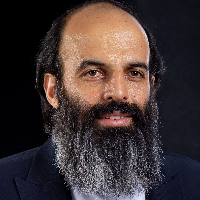The Motif of the Peacock in the Murals of the East Tower of Kharaghan with an Iconographic Approach
Author(s):
Article Type:
Research/Original Article (دارای رتبه معتبر)
Abstract:
The Seljuq period is one of the most brilliant periods in the history of Iranian art. Many factors contributed to the growth and flourishing of art in this period, including political and economic stability, court attention to art and artists, and the spread of science and culture. Although mural painting is one of the most important media of Seljuq art, plenty of works of this valuable art have been lost throughout history. The murals inside the eastern tower of Kharaghan are the only remnants of this rich and deep-rooted Iranian visual tradition in this period. These murals include geometric, animal, plant, and calligraphic motifs, of which the peacock motif is one of the most notable ones. This motif is one of the most important and widely used motifs in Seljuq period illustration. The purpose of this study is to explain the meaning and concept of peacock motifs in the murals of the eastern tower of Kharaghan. Through this research, the iconographic approach has been used as a theoretical framework, which enables us to explore and understand the meanings inside this motif by studying the roots of its creation. In this research, the descriptive-analytical method has been used. The approach considered in this research is qualitative and the collection of information is library and field observation. The population studied in this research is divided into two categories: main society and sub-society. The main category is the same as the murals of the tower and the second category is enamel dishes were used as an example of evidence. The main reason for choosing a sub-community for the study is the high similarity of forms and visual elements with the main community. Following the theoretical framework, First, we analyze the form of each of these images. Then in the second stage by referring to the literary texts of this period, we examine the subject and concept of the peacock in writings and poems. In the third stage of this approach, for a deeper understanding of the subject, we refer to other sources, which are the same as enamel dishes. Lastly, after examining various texts and relics from this period, we concluded that the peacock represents power and glory in these murals, rather than being considered a sacred motif. Therefore, in this period, the peacock has more of a practical aspect than a symbolic one. The peacock loses its former symbolic meaning and shows a new meaning in this period. This indicates that many of these symbolic meanings are conventional and lose their former meaning over time and in the new society they show a different meaning. According to the studies done, it can be seen that in this period, the motif of the peacock takes on a completely different meaning and becomes more courtly, and was used to show power and glory. Unlike previous eras, the peacock had a symbolic and holy color in works of art and was mystically important. According to the sources related to the Seljuq era, the peacock is no longer considered a heavenly and sacred creature, on the contrary, its previous value and prestige are lost and even its position is damaged to such an extent that it is complicit. It is identified with Satan in Adam’s exit from heaven. A creature that was previously known as a manifestation of godliness and love, is known in the literary sources of this period as a regretful creature with hideous feet that represent his sin. Therefore, it cannot be assumed that this role was used in these mural paintings in a sacred and customary sense. From an aesthetic point of view, the peacock is valuable because of its beautiful shape, especially in the form and color of its feathers, and it is present in many works and objects. In the end, it can be concluded that this role of the subject has taken root among other art branches and has been constantly repeated in other fields as well. This motif is considered one of the most practical motifs of this course.
Keywords:
Language:
Persian
Published:
Journal of Rahpooye honar, Volume:5 Issue: 3, 2022
Pages:
79 to 87
magiran.com/p2519475
دانلود و مطالعه متن این مقاله با یکی از روشهای زیر امکان پذیر است:
اشتراک شخصی
با عضویت و پرداخت آنلاین حق اشتراک یکساله به مبلغ 1,390,000ريال میتوانید 70 عنوان مطلب دانلود کنید!
اشتراک سازمانی
به کتابخانه دانشگاه یا محل کار خود پیشنهاد کنید تا اشتراک سازمانی این پایگاه را برای دسترسی نامحدود همه کاربران به متن مطالب تهیه نمایند!
توجه!
- حق عضویت دریافتی صرف حمایت از نشریات عضو و نگهداری، تکمیل و توسعه مگیران میشود.
- پرداخت حق اشتراک و دانلود مقالات اجازه بازنشر آن در سایر رسانههای چاپی و دیجیتال را به کاربر نمیدهد.
In order to view content subscription is required
Personal subscription
Subscribe magiran.com for 70 € euros via PayPal and download 70 articles during a year.
Organization subscription
Please contact us to subscribe your university or library for unlimited access!



